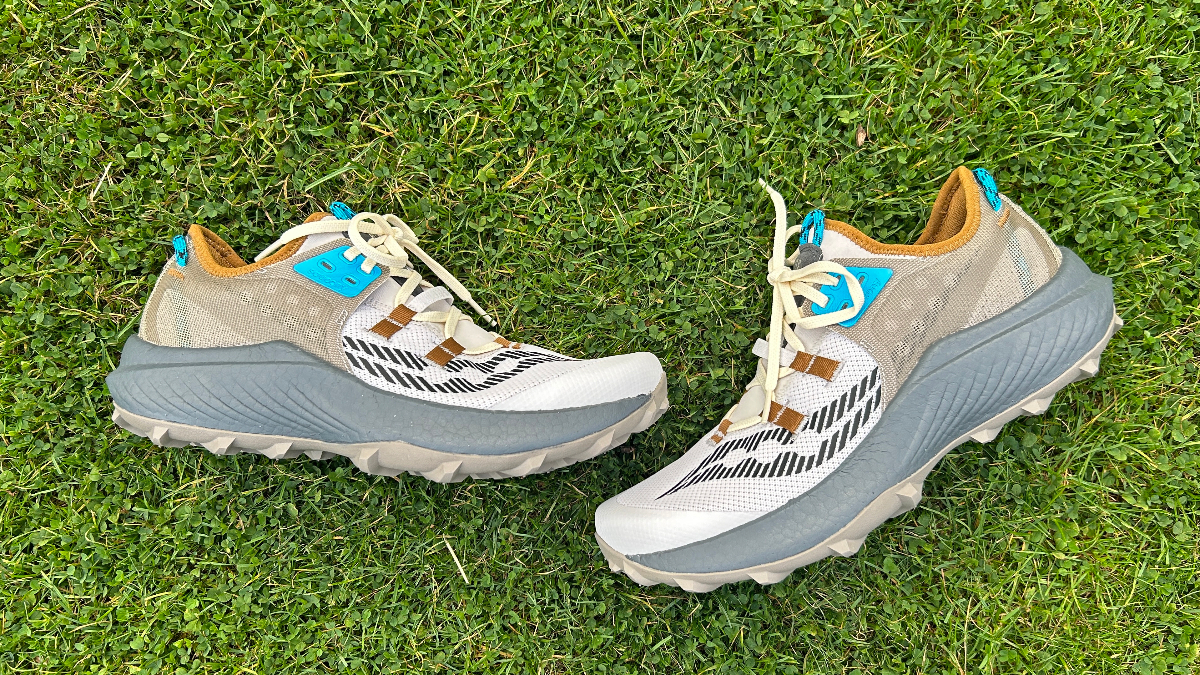Our Verdict
The Saucony Endorphin Rift is an enjoyable and relatively versatile trail-running shoe, but its high price leads you to expect something special—which it doesn’t deliver. You can get a similar (and higher) level of performance from more affordable trail shoes, including some in Saucony’s own range.
For
- PWRRUN PB midsole
- Good grip on soft ground
Against
- Cheaper alternatives available
- Could be lighter
You can trust Coach
The Saucony Endorphin range includes some of the best running shoes available for the road, such as the Saucony Endorphin Speed 3 and Pro 3. However, on the trail side, the performance of the Endorphin shoes has been more of a mixed bag.
The Saucony Endorphin Edge carbon plate racer is one of the best trail-running shoes available, but the original Endorphin Trail was a miss—heavy and overpriced. The Saucony Endorphin Rift is somewhere in between. It’s fun to use, but doesn’t excel at anything and is too expensive when Saucony and other brands have alternatives that cost less. The Asics Fujispeed 2 in particular is a better option.
Saucony Endorphin Rift: Price And Availability
The Saucony Endorphin Rift launched in May 2023 and costs $170 in the US and £180 in the UK. That’s expensive for a trail-running shoe without a carbon plate, and only a little less than the Endorphin Edge plated racing shoe, which is $200/£200.
How I Tested This Shoe
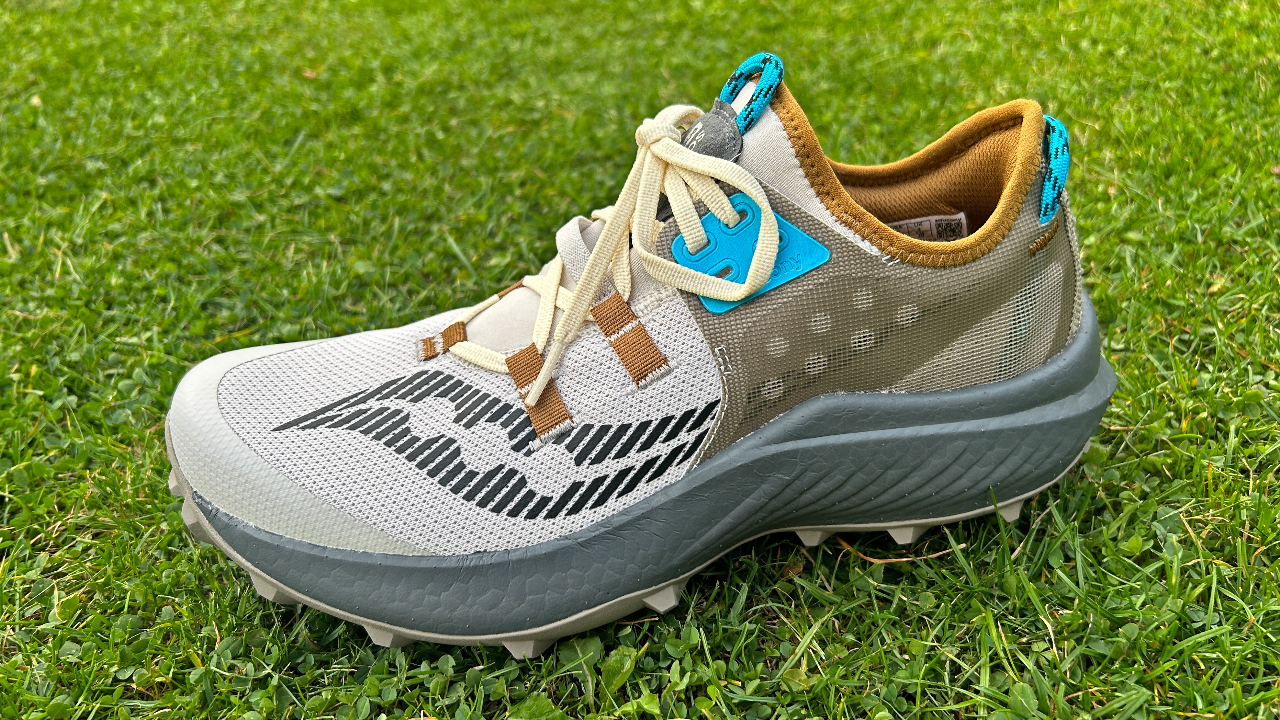
I’ve run 30 miles in the Saucony Endorphin Rift, using it for slow and fast training runs in my local forest on a mix of hard-packed paths, mud and grass. I have also tested the Saucony Endorphin Edge and a range of the best trail-running shoes.
Design And Fit
The feature that ties the Rift to the rest of the Saucony Endorphin range is its midsole. It’s made from the Peba-based PWRRUN PB foam used so successfully on shoes like the Endorphin Pro 3, and has the same Speedroll rocker geometry to create a smooth transition from heel to toe.
There isn’t a performance-focused carbon plate in the midsole, though there is a flexible woven rock plate under the forefoot to protect your feet on rocky runs. The shoe has quite a wide design and sidewalls of foam to help with stability. The stack height is 33mm at the heel and 27mm at the forefoot for a 6mm drop.
The mesh upper is a complicated affair with a high collar, and there’s a second layer of fabric at the back of the shoe to add more structure around the heel. The toe box has a reinforced bumper to protect you from accidental impacts on the trails, and there are loops on the heel and tongue to help you pull the shoe on.
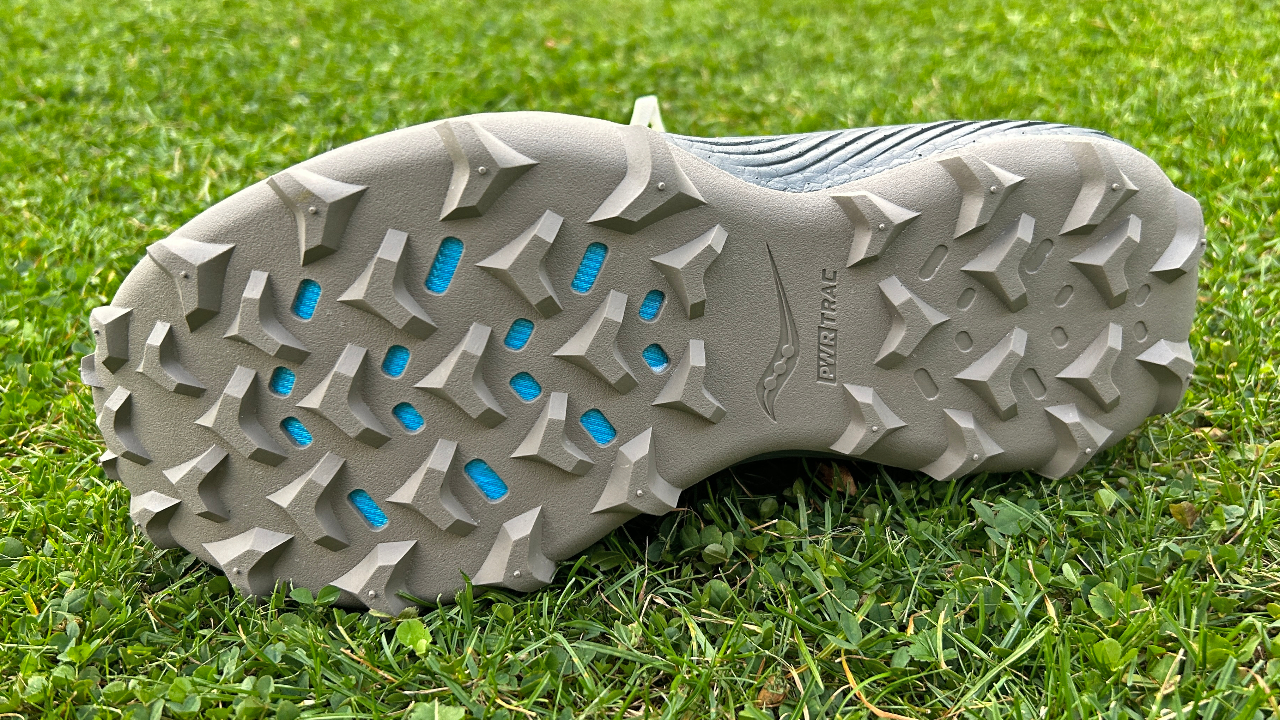
I found that the fit was tight in my normal running shoe size, and notably tighter around the toes than the Endorphin Edge. The hold around the midfoot and heel was good, however, and I’d hesitate to go a size up. If you’re planning to cover ultra distances in the shoe with lots of descending, the tight toe box may become uncomfortable: I noticed my toes hitting the front of the shoe on one foot when running fast downhill.
The outsole has 4.5mm lugs and a similar design to the outsoles of the Saucony Xodus Ultra 2 and Peregrine 13. The grip was good on soft ground thanks to those quite long lugs, which are a slightly unusual choice—most of the speedy trail shoes with this much cushioning that I’ve tested have shorter, flatter lugs for hard ground. The long lugs on the Endorphin Rift add weight and make the ride less smooth on harder, flatter trails.
At 9.9zoz/281g in a UK size 9, the Endorphin Rift isn’t heavy for a trail shoe with such a substantial outsole and fairly high stack of cushioning, but it’s also not light enough to feel nimble and fast. Trimming down the outsole to make it lighter might have helped it stand out more from Saucony’s other trail shoes.
Running Performance
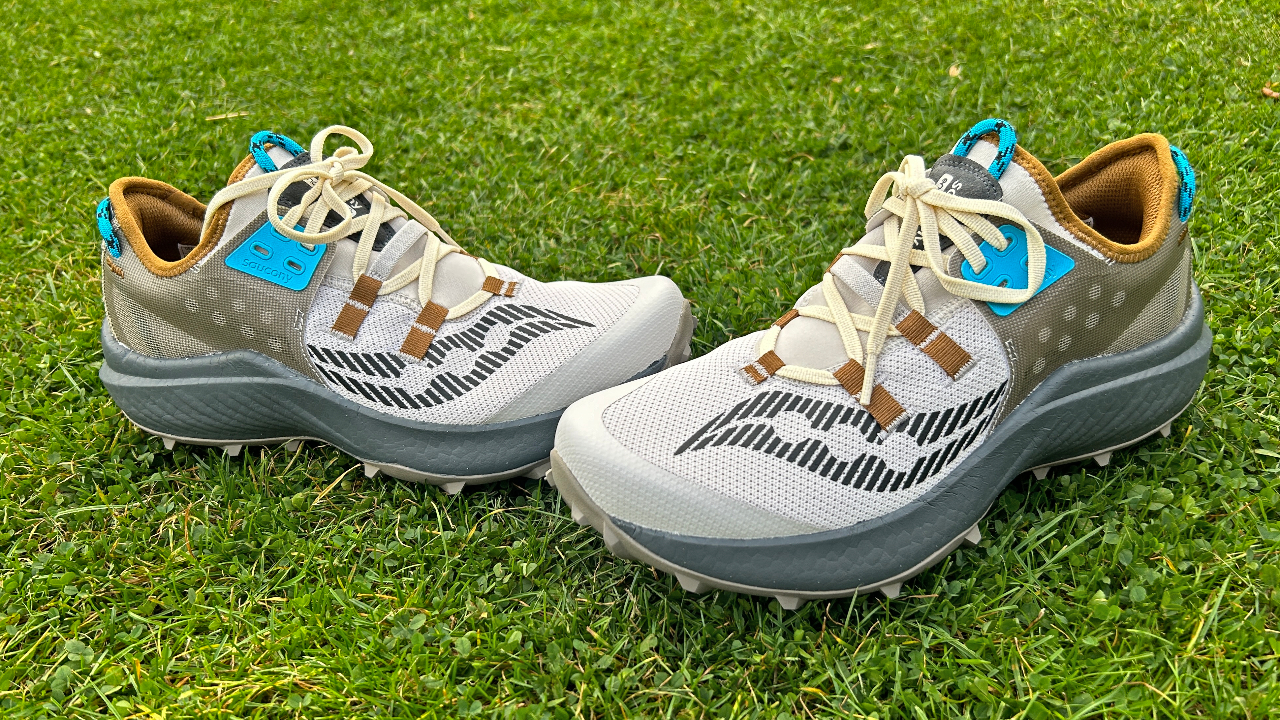
Based on the features and materials used, I was hoping that the Endorphin Rift might be a Saucony Endorphin Speed 3 for the trails, since it has a similar stack of PWRRUN PB foam and the Speedroll rocker. However, the thicker upper and outsole make a big difference, and the Rift didn’t feel like a lightweight speedster on the foot. It was bouncy when on harder ground and the rocker pushed me onto my toes effectively—although once I was on softer trails or narrow, twisting paths, it didn’t feel light or agile.
I did a couple of progression runs in the shoe, starting easy and finishing around my tempo effort, and it was a slog to run fast in the Endorphin Rift, which was unexpected. It’s a big shoe and felt cumbersome when on even slightly soft trails.
This is why the outsole on the shoe confused me. On harder ground I got more bounce and a better ride from the midsole, but the outsole wasn’t as comfortable on hard trails or paved surfaces as one with lower, flatter lugs. The grip seems designed for soft ground, but the midsole worked best on harder stuff.
Overall, while the Rift was fine for a variety of runs, it didn’t feel exceptional or great for anything, and that’s a problem given the high price.
Is The Saucony Endorphin Rift Worth It?
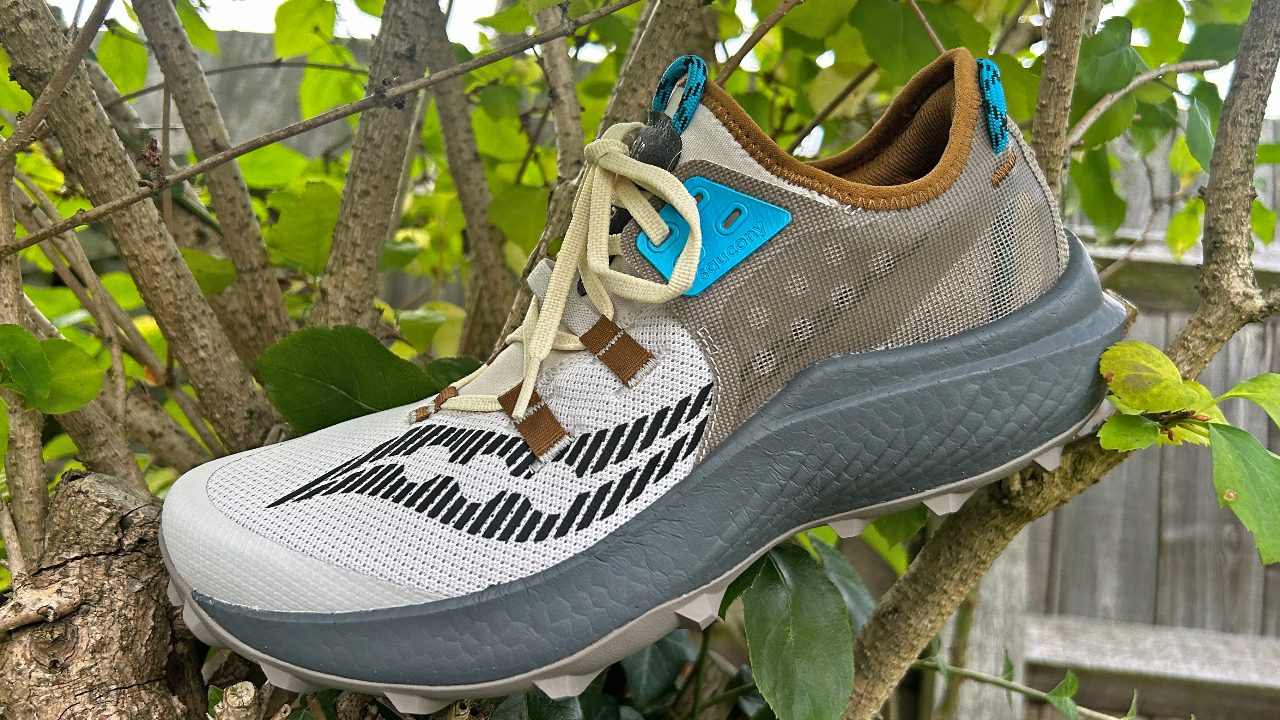
The positive is that the Saucony Endorphin Rift is a good all-round trail shoe, but it doesn’t make my list of the best Saucony running shoes because there are better (and better-value) shoes out there. The Saucony Xodus Ultra 2 and Saucony Peregrine 13 work well for similar runs in my experience, and are cheaper than the Rift.
If you’re looking for a fast trail shoe then the Saucony Endorphin Edge is a wiser choice, and often available in sales now. Or you can get the Asics Fujispeed 2 for less, and that shoe actually feels more like a Saucony Endorphin Speed 3 for the trails.
In the end, I just don’t know exactly what the Endorphin Rift is for, and it’s too similar to other shoes from Saucony to recommend. It would stand out more in the range if the outsole and upper were reduced to make it a light shoe that’s a speedy option for those who don’t want a plate.

Nick Harris-Fry is a journalist who has been covering health and fitness since 2015. Nick is an avid runner, covering 70-110km a week, which gives him ample opportunity to test a wide range of running shoes and running gear. He is also the chief tester for fitness trackers and running watches, treadmills and exercise bikes, and workout headphones.
